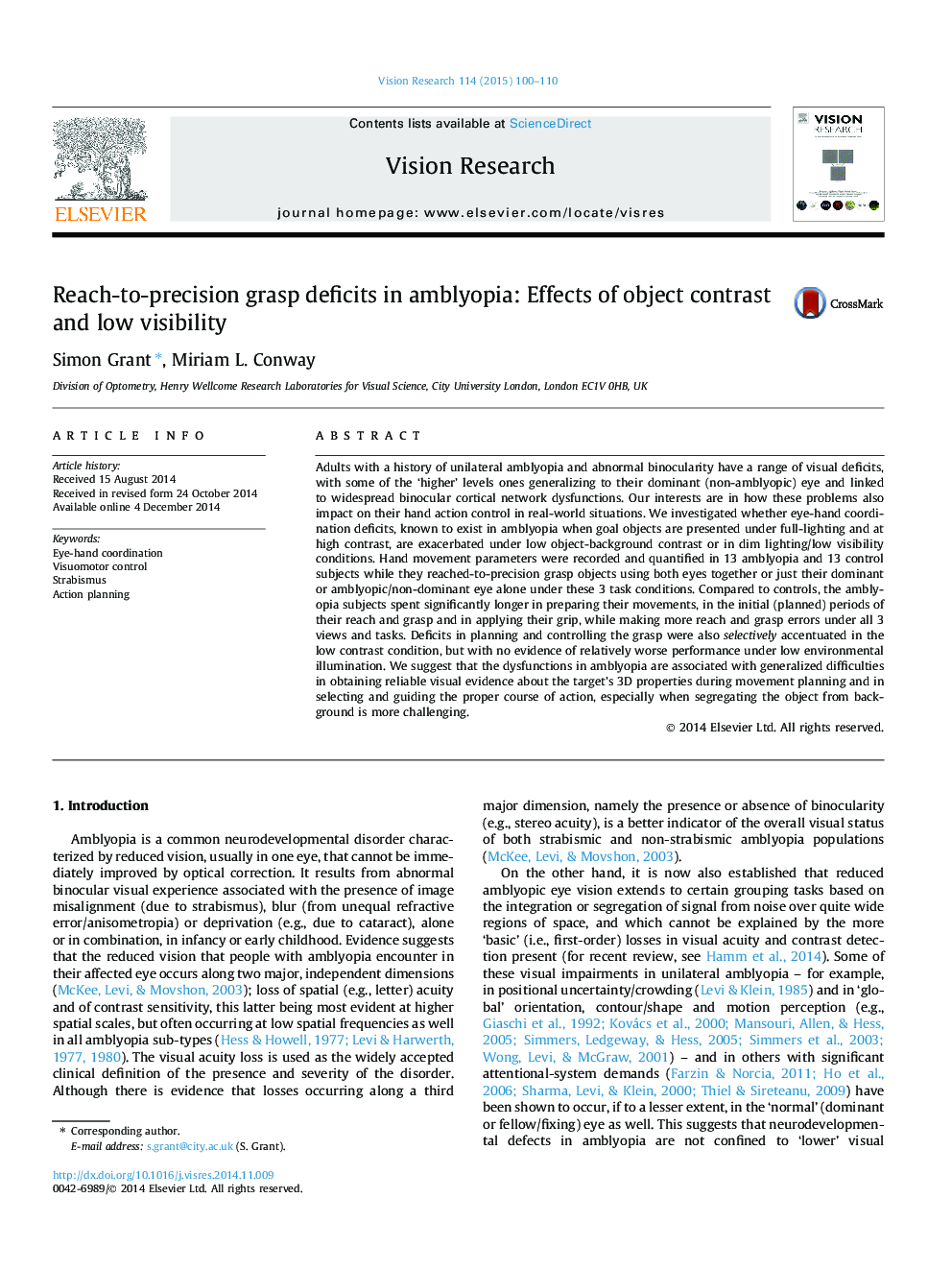| Article ID | Journal | Published Year | Pages | File Type |
|---|---|---|---|---|
| 4033603 | Vision Research | 2015 | 11 Pages |
•Amblyopes have hand movement planning and execution deficits compared to controls.•The deficits are evident in viewing binocularly or with dominant eye or affected eye.•Amblyopes and controls show relatively equal impairments under dim illumination.•But low object contrast selectively impairs planning and grasping in amblyopes.
Adults with a history of unilateral amblyopia and abnormal binocularity have a range of visual deficits, with some of the ‘higher’ levels ones generalizing to their dominant (non-amblyopic) eye and linked to widespread binocular cortical network dysfunctions. Our interests are in how these problems also impact on their hand action control in real-world situations. We investigated whether eye-hand coordination deficits, known to exist in amblyopia when goal objects are presented under full-lighting and at high contrast, are exacerbated under low object-background contrast or in dim lighting/low visibility conditions. Hand movement parameters were recorded and quantified in 13 amblyopia and 13 control subjects while they reached-to-precision grasp objects using both eyes together or just their dominant or amblyopic/non-dominant eye alone under these 3 task conditions. Compared to controls, the amblyopia subjects spent significantly longer in preparing their movements, in the initial (planned) periods of their reach and grasp and in applying their grip, while making more reach and grasp errors under all 3 views and tasks. Deficits in planning and controlling the grasp were also selectively accentuated in the low contrast condition, but with no evidence of relatively worse performance under low environmental illumination. We suggest that the dysfunctions in amblyopia are associated with generalized difficulties in obtaining reliable visual evidence about the target’s 3D properties during movement planning and in selecting and guiding the proper course of action, especially when segregating the object from background is more challenging.
